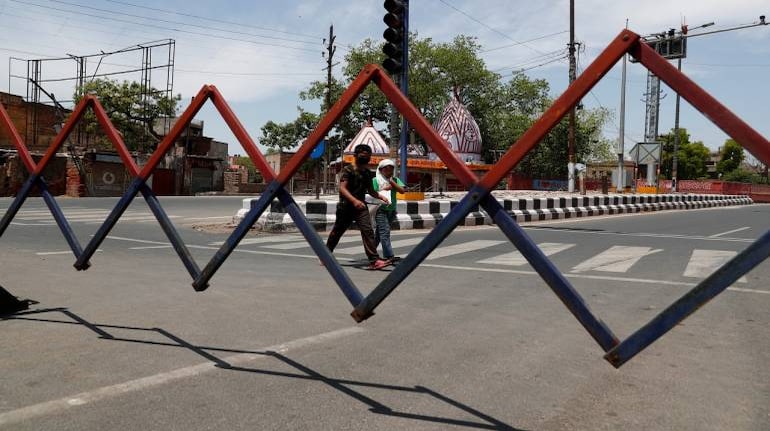
Due to the spread of coronavirus and the global lockdown, multilateral organisations and international agencies have been predicting the worst economic downturn since Great Depression. All are almost unanimous on this view for two main reasons. First, the virus has affected both the developed and developing economies simultaneously. Its geographical coverage is now expanding. It is not just China, Europe and the United States; it is now spreading fast into Russia, Turkey, South Asia, West Asia and Latin America.
Second, it has drastically reduced both demand and supply. When the governments themselves have directed industry and services to shut operations, traditional stimulus packages have little meaning.
Now it is not just forecasts, actual GDP numbers for Q1 2020 for some major economies are out. The extent of their decline has surpassed some earlier predictions. The European Union’s (EU)’s statistical agency, Eurostat, has reported that for the 2020 first quarter, the GDP in 19 Eurozone economies has shrunk by 3.8 percent. The same figure for 27 EU economies is minus 3.5 percent. France, the second-largest economy in the EU, has announced that its GDP has dropped by minus 5.6 percent, its biggest drop since 1949. This drop is much bigger than recorded during the financial crisis in Q1 2009 (–1.6 percent) or during political upheaval in Q2 1968 (–5.3 percent). Except food, all sectors have seen contraction, with the sharpest decline in engineering goods and construction.
Compared to the previous quarter, the Italian GDP dropped by 4.7 percent. Similarly, the Spanish economy contracted by 5.2 percent and the Austrian economy by 2.5 percent. When released, the German economic numbers may show similar trends. Christine Lagarde, President of the European Central Bank (ECB), says that the euro area is “facing an economic contraction of a magnitude and speed that are unprecedented in peacetime”. The ECB now estimates that in 2020, the fall of euro area GDP could be between five and 12 percent.
The United States has also reported that in Q1-2020, its GDP has decreased by minus 4.8 percent. In the previous quarter, the US had shown a healthy growth of 2.1 percent. China, the second-largest economy, which was affected first, earlier declared a 6.8 percent decline in the first three months of 2020 from a year ago. This is the first time China has seen this kind of decline since it started recording quarterly data since 1992.
With more than 42,000 infections and already close to six weeks of national lockdown, India’s growth story cannot be very different. Earlier, the International Monetary Fund (IMF) predicted about 2 percent GDP growth in India in 2020. With the developing global recession, India will be fortunate if it is able to achieve this. The economy was already weakening when lockdown started. Still, developing economies such as India, may perform slightly better. Agriculture and basic food items are lest affected by lockdowns. Also, a large number of people in these countries still depend on agriculture and spend significant part of their earnings on food items. India is also less integrated with global value chains.
Since lockdowns started in March in many countries, a much bigger downturn is expected in the second quarter. IMF chief economist Gita Gopinath predicts that the cumulative loss from the pandemic to global GDP in 2020 and 2021 “could be around $9 trillion, greater than the economies of Japan and Germany, combined”.
To offset these impacts, all major economic powers are infusing huge amounts into their economies. The collective response from the EU and its member states is well above 3 trillion euros. The US package of $2trillion include relief to big corporates and small businesses, individuals, states and local governments as well as public health. Japan has announced a $1 trillion relief package. These measures, however, will only be useful if at least some treatment is found by the third quarter and economies start opening up.
Despite massive relief packages, a joint global effort is vital to resolve the health problems first. On May 4, the EU — along with Canada, France, Germany, Japan, Norway, the United Kingdom, and current and future G20 presidency Saudi Arabia and Italy — is hosting a pledging event: the Coronavirus Global Response Initiative.
Co-convened by WHO and World Bank, the initiative aims to garner at least $8 billion for jointly developing solutions to test, treat and prevent the disease from spreading. New diagnostics, treatments and vaccines needs to be affordable and available to all. With its strong pharmaceutical industry, India could be a valuable partner to these global solutions. The hydroxychloroquine episode has already proved its strength.
The first quarter GDP results from major economies indicate the seriousness of the economic recession. The next quarter could be worse. Massive relief packages by major powers could be useful to the global economy. However, they will only work if a joint global effort is successful in developing affordable health solutions soon.
Gulshan Sachdeva is Jean Monnet Chair and Chairperson Centre for European Studies, Jawaharlal Nehru University, New Delhi. Views are personal.
Discover the latest business news, Sensex, and Nifty updates. Obtain Personal Finance insights, tax queries, and expert opinions on Moneycontrol or download the Moneycontrol App to stay updated!